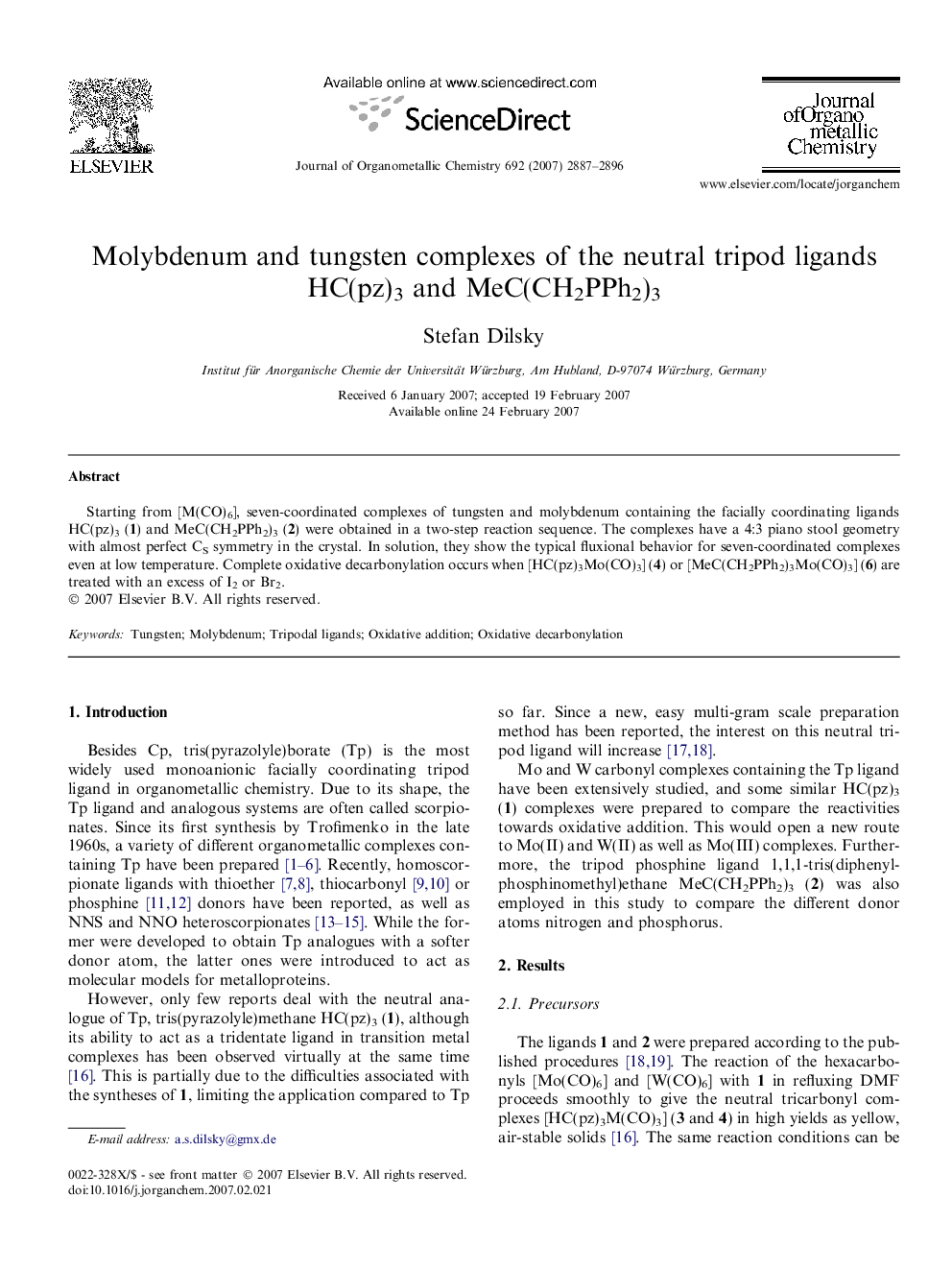| Article ID | Journal | Published Year | Pages | File Type |
|---|---|---|---|---|
| 1327263 | Journal of Organometallic Chemistry | 2007 | 10 Pages |
Starting from [M(CO)6], seven-coordinated complexes of tungsten and molybdenum containing the facially coordinating ligands HC(pz)3 (1) and MeC(CH2PPh2)3 (2) were obtained in a two-step reaction sequence. The complexes have a 4:3 piano stool geometry with almost perfect CS symmetry in the crystal. In solution, they show the typical fluxional behavior for seven-coordinated complexes even at low temperature. Complete oxidative decarbonylation occurs when [HC(pz)3Mo(CO)3] (4) or [MeC(CH2PPh2)3Mo(CO)3] (6) are treated with an excess of I2 or Br2.
Graphical abstractSeven-coordinated complexes of tungsten and molybdenum containing the facially coordinating ligands HC(pz)3 (1) and MeC(CH2PPh2)3 (2) have a 4:3 piano stool geometry with almost perfect CS symmetry in the crystal. In solution, they show the typical fluxional behavior for seven-coordinated complexes. Complete oxidative decarbonylation occurs when [HC(pz)3Mo(CO)3] (4) or [MeC(CH2PPh2)3Mo(CO)3] (6) are treated with an excess of I2 or Br2.Figure optionsDownload full-size imageDownload as PowerPoint slide
